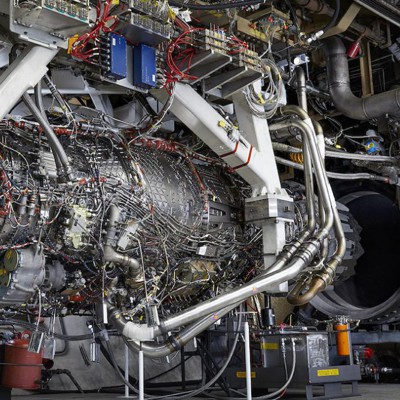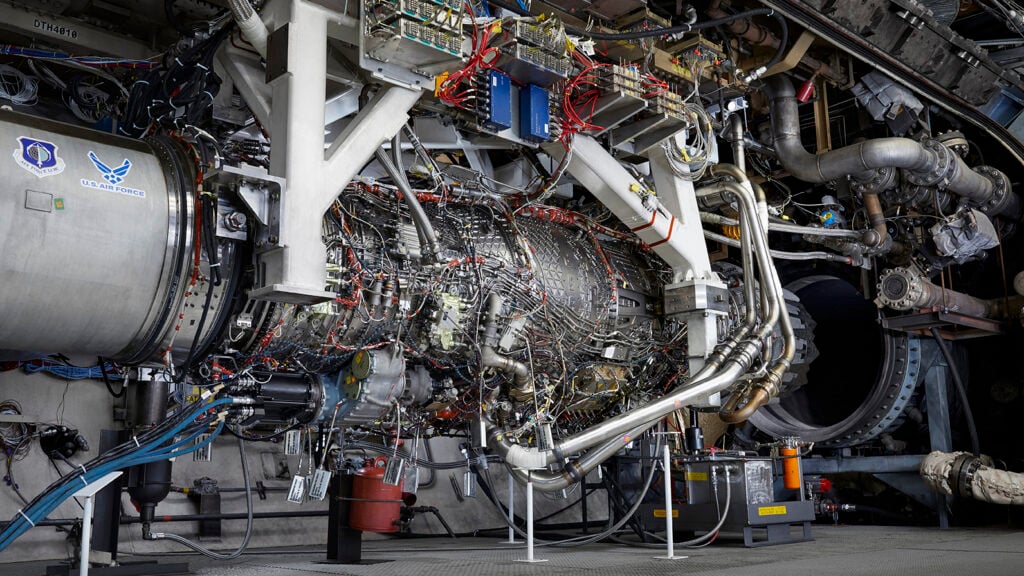WASHINGTON — For years, Rep. Rob Wittman, R-Va,. was known as a leading voice on naval matters in Congress. But with the 118th Congress, Wittman has left his ship committee behind and taken on the role of chairman on the House Armed Services Committee’s tactical air and land forces subcommittee.
Following a
subcommittee hearing on March 29, Breaking Defense sat down with Wittman to discuss his key priorities for the Air Force.
The transcript has been edited for length and clarity.
Breaking Defense: At the hearing, you made clear you wanted everyone involved in the F-35 engine decision to provide more information before coming to your own conclusion about next steps. So what information have you received, what are you still hoping to find out, and when do you think you’ll receive enough information to make a decision?
Rep. Wittman: As we heard yesterday in the hearing, [the Government Accountability Office’s] perspective is that the BCA, the business case analysis, was more of a comparative analysis… And it revolves around, you know, if the BCA is about the ability for the engine to provide power, and to cool itself to assure engine life, how did those requirements get expressed to [Pratt & Whitney and General Electric]? What is happening on the actual engine design itself? What are the differences in not only the immediate cost, but the long-term cost of the engine, when you’re essentially upgrading the engine core, which is the compressor, how fuel is fed in there.
And then at some point, as the power demand goes up, your fuel thermal management system has to change, your power thermal management system has to change. And at some point for both engines, you have to do that, because the demands on the engines get to where the heat that you’re trying to dissipate to extend engine life starts to transfer into the other external systems on the engine…and then, too, to look at the full scope of how costs are assessed. So it’s not just the initial purchase cost of the engine, but it’s what would be the the cost over the lifetime of the aircraft, fuel consumption, the necessity for tanking aircraft, all those sorts of things are part of what you can make an argument to say you have to look at the full picture on cost. Those are things that weren’t purposely left out. But this was just an analysis about the cost initially of both engines.
The argument that’s been laid out has been that the [Engine Core Upgrade, or ECU] approach provides acceptable levels of enhanced performance while maintaining commonality across the fleet at a lower cost. Is that an argument that’s compelling to you, especially when weighed against the greater capabilities that can be gained by an adaptive engine?
Well, I think you have to dig even a little bit deeper than that. They are correct ECU is the only engine form that is able to be compatible with all three versions of the aircraft. But when you do get above a certain cooling and power demand, then you do have to make modifications to the fuel thermal management system and the power thermal management system, so those are additional requirements that would have to be done on the aircraft, regardless probably for both engine variants… There are differences in what [an adaptive] engine can do in channeling bleed air and being able to manage fuel consumption, but also manage how the engine responds to power and cooling demands. It’s a modernized engine, it’s certainly something that I think has utility for the Air Force, it’s certainly something that we are well ahead – good news, we’re well ahead of our competitors like China on that.
But the question is, what overall is the best decision? And how do you look at all the different aspects? And I think everybody needs to be aware of is, is this a decision where you say, well, we put [an adaptive engine] just in the [F-35A] and then ECU in the other versions, because that’s almost where it would take you if you did decide to somehow incorporate [an adaptive engine]. So I think that’s something that every member is going to have to ask themselves, because I can tell you, this is going to get re-litigated in the committee and on the floor. And I just want to make sure people have the full scope of information to make the decision.
You know, I’d like for it not to be parochial. And I admire and respect both companies. We need both companies in the engine manufacturing business… The question right now, though, before us is what’s the best decision going forward for the F-35. And I think there’s still more information that the [F-35 Joint Program Office, or JPO] needs to give to us.
What do you think would have to emerge for there to be appetite in Congress to move forward with an adaptive engine and essentially veto the Pentagon’s preferred approach?
I think it’s hard to tell right now, because I think there are a lot of different things that will enter into it. I think folks from those regions, obviously have an interest in the viability of the companies in their regions. That’s a legitimate concern. The larger context, though, is what’s the best long-term decision for the military and all these different variants.
Another thing too that doesn’t get mentioned — and I think needs to be part of it, not the primary part of it — we do have international partners that are going to be affected by this. So if you go down a path where all of a sudden your partners go, ‘We can’t afford that,’ the question then becomes, what do you do to make sure that their aircraft continue to be viable and that they meet their expected service life. It’s a pretty hefty price tag on that aircraft. We want to make sure that if we’re going to have them as partners that they don’t get in a situation where they look at it and go, Wow, we expected this aircraft to last a lot longer, or that the lifecycle costs were not what we projected them to be. So I think all of those things are part of the decision that will take place going forward.
There is a monetary element of that. Listen, this is not going to be like the last two years, where we’ve been able to just kind of move the top line and then arrive at that place and everybody was happy. There’s going to be a cap on where we go. And essentially, that’s where things are being worked from now. So if you are going to fund this, you’re going to have to find a bill payer… If [the Air Force has] to put more money in somewhere else, the question is, where will that come from? More than likely, it’s going to come from some sort of future capability, which is what we’ve seen in all the
divest-to-invest strategy.
So I don’t know — if somebody is going to say “I’m proposing to do
[the Adaptive Engine Transition Program, or AETP] for all variants, or even just for the Air Force variant,” there’s got to be a bill payer. And you can draw it from anything that you want. But that’s a domino effect. So if you draw it from here, all of a sudden, people go no, no, you can’t do that. So it’s kind of a house of cards with that.
Whoever puts an amendment in to change the JPO decision — it may be ratifying the JPO decision, it may be reversing the JPO decision, and there could be just a debate back and forth between the two. But if you’re going to go in the direction of AETP, which will take more money, you’ve got to find a bill payer, because you’re not gonna be able to just say well, we’ll add it to the top line.







